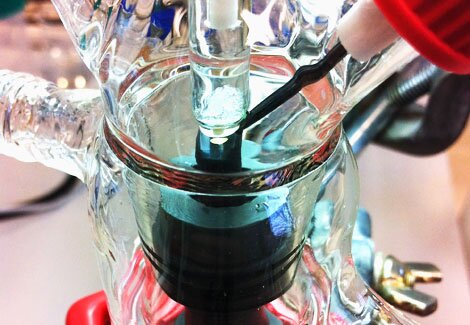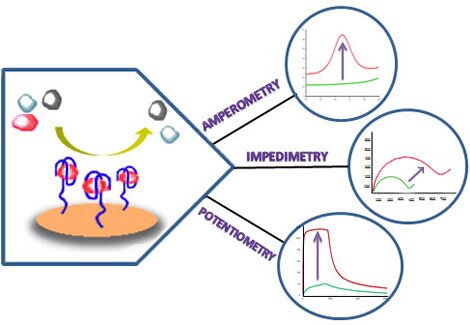New sensor detects antibiotic in milk
- Nieuwe sensor detecteert chlooramfenicol in melk - Nudeboerop.nl, 17-02-2014
- Efficiëntere opsporing gevaarlijk antibioticum in melk - Vlaams infocentrum land- en tuinbouw, 17-02-2014
- Nieuwe sensor spoort antibioticum in melk op - Agripress, 17-02-2014
- UAntwerpen kan gevaarlijk chlooramfenicol opsporen - 't Preiodiekske, 31-03-2014
Press release: New sensor detects antibiotic in milk
Date: 20 februari 2014
Chloramphenicol (CAP) is an antibiotic that is used in food production for cattle. Because CAP is dangerous for humans, however, it must not enter the human food chain. Prof Karolien De Wael (University of Antwerp) has collaborated with a number of colleagues to develop a sensor for detecting CAP in milk.
Since 1950, CAP has been used primarily to increase food production in cattle. Human use is strictly limited (e.g. to the treatment of eye infections), since the broad-spectrum antibiotic has serious side effects (anaemia, leukaemia, grey baby syndrome). “The use of CAP in the human food chain is prohibited in the United States, Canada and Europe, although it is still used in other parts of the world”, explains Prof Karolien De Wael (Department of Chemistry). “The risk to human health is therefore real. For this reason, the European Commission has imposed a minimum required performance limit for detecting CAP in foodstuffs such as meat, eggs and milk.”

“Several methods are available for detecting CAP and its derivatives. Nevertheless, while these screening methods are very sensitive and relatively inexpensive, they do have selectivity problems and sometimes return false positives. The most recent methods are more selective, but their implementation requires expensive instruments. They are difficult to incorporate into a continuous monitoring system, and they require the sample to go through several cleaning stages, which makes the analysis time-consuming and not cost-effective. The need to develop a new method was therefore urgent”, continues De Wael.
An electrochemical sensor offers an excellent alternative. “These sensors are already widely used in the chemical sector due to their low cost, rapid analysis time and simplicity of operation.” De Wael and her team developed an electrochemical sensor that can selectively detect CAP in raw milk at levels below the minimum required performance limit. It is the first sensor to meet the European detection requirements.
De Wael goes on to explain how the sensor works. “The selected aptamers are immobilised on an electrode surface. Aptamers are short, single-strand DNA chains that interact with their target molecules in specific ways. In this case, they bind with the CAP molecules, thus enhancing the electron transfer between the CAP molecules and the sensor surface, making it possible to detect CAP in raw milk at levels below the minimum required performance limit.”

The aptamer that binds selectively to CAP was picked out in the laboratory of Prof Ronny Blust (SPHERE research unit, Department of Biology) in collaboration with Dr Johan Robbens of the Institute for Agricultural and Fisheries Research (ILVO). The electrochemical aptasensor for CAP was developed in the laboratory of Prof Karolien De Wael (AXES research unit, Department of Chemistry). Both research units belong to the Enviromics consortium, which is supported by the Industrial Research Fund. A patent application has already been submitted to the European Patent Office.
Figure: Aptamers are immobilised on a gold electrode surface, where they bind selectively to CAP molecules, thus enabling electron transfer and its detection.
More information?
Prof Karolien De Wael (UAntwerp, AXES research unit): karolien.dewael@uantwerpen.be and 0491 52 39 08